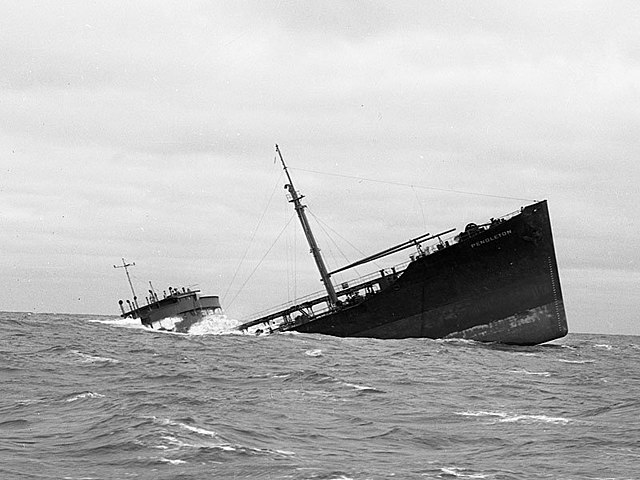The T2 tanker, or T2, was a class of oil tanker constructed and produced in large numbers in the United States during World War II. Only the T3 tankers were larger "navy oilers" of the period. Some 533 T2s were built between 1940 and the end of 1945. They were used to transport fuel oil, diesel fuel, gasoline and sometimes black oil-crude oil. Post war many T2s remained in use; like other hastily built World War II ships pressed into peacetime service, there were safety concerns. As was found during the war, the United States Coast Guard Marine Board of Investigation in 1952 stated that in cold weather the ships were prone to metal fatigue cracking, so were "belted" with steel straps. This occurred after two T2s, Pendleton and Fort Mercer, split in two off Cape Cod within hours of each other. Pendleton's sinking is memorialized in the 2016 film The Finest Hours. Engineering inquiries into the problem suggested the cause was poor welding techniques. It was found the steel was not well suited for the new wartime welding construction. The high sulfur content made the steel brittle and prone to metal fatigue at lower temperatures.

The T2 tanker Hat Creek in August 1943
The new T2 tanker Schenectady broke in two at its dock due to brittle metal and bad welding
The fractured USS Ponaganset (AO-86), at the General Ship and Iron Works, Boston, MA., 9 December 1947
The T2 tanker "Pendleton" bow in 1952
An oil tanker, also known as a petroleum tanker, is a ship designed for the bulk transport of oil or its products. There are two basic types of oil tankers: crude tankers and product tankers. Crude tankers move large quantities of unrefined crude oil from its point of extraction to refineries. Product tankers, generally much smaller, are designed to move refined products from refineries to points near consuming markets.
The commercial oil tanker AbQaiq, in ballast
Falls of Clyde is the oldest surviving American tanker and the world's only surviving sail-driven oil tanker.
Zoroaster, the world's first tanker, was built by Sven Alexander Almqvist in the Motala Verkstad and delivered to the Nobel brothers in Baku, Azerbaijan.
Glückauf grounded in heavy fog at Blue Point Beach on Fire Island.








